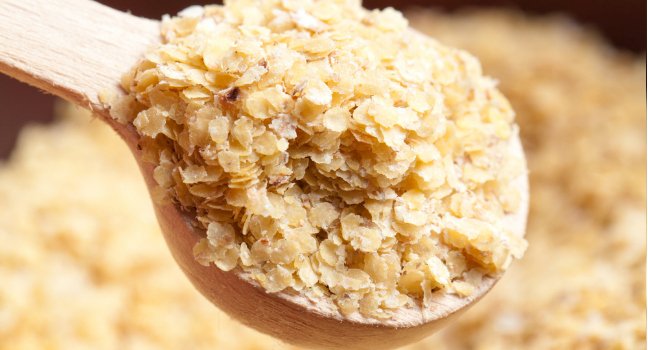Wheat Germ is a simple way to boost nutrition in your baby’s food.
Wheat germ is easy to incorporate into baby’s diet; add it to yogurt, fruit & veggie purees and so much more! Wheat germ may come in a small package but it sure does pack a whollop of a nutritional punch for baby and toddler alike. Wheat germ (I love the Kreschmer brand) has Iron, vitamin B, Folic Acid and Vitamin E as well. Best of all?
All of the wonderful nutrients in wheat germ are some of the key nutrients that a baby needs to grow healthy and strong.
When Can Babies Have Wheat Germ? 

As you guessed, wheat germ comes from the germ of wheat. As the recommendations for introducing allergens have been changing, it is most important to consult with your pediatrician about introducing any form of wheat to your baby. The “old” recommendation for introducing wheat ranged from 8 months of age to 12 months of age. Typically, it is suggested that 8-9 months old is a good age when you may begin to introduce wheat products such as wheat germ.
PLEASE be sure to consult with your pediatrician as your infant may have a special situation and the general recommendations may not apply. Read more about Wheat and Baby Food
Nutritional Value of Adding Wheat Germ to Baby Food
Did you know that 1 and 2/3 tablespoons of wheat germ contains the adult RDA of:
4 grams of protein, 6% Iron, 20% Vitamin E, 20% Folic Acid and 10% Thiamin
How do I store Wheat Germ?
Store Wheat Germ in the refrigerator. Just like Flax, wheat germ contains natural oils and is fatty and thus it must be stored properly. Whether you are using Toasted or Natural, store your Wheat Germ in the refrigerator. Untoasted wheat germ may go rancid very quickly and then it will be unhealthy to eat.
Add Wheat Germ in Baby Food Recipes:
- Sprinkle wheat germ on fruits
- Blend wheat germ in with cream cheese and spread over toast
- Add wheat germ to yogurt then add fruit or veggie puree
- Use wheat germ in baked goods such as homemade teething cookies, breads and pancakes
- Add it to J&J’s Baby Meatballs
- Use it to coat slippery finger foods such as bananas, peaches and pears
- The ways to add wheat germ to baby food recipes are endless!
![]() Remember, always consult with your pediatrician regarding introducing solid foods to your baby and specifically discuss any foods that may pose allergy risks for your baby.
Remember, always consult with your pediatrician regarding introducing solid foods to your baby and specifically discuss any foods that may pose allergy risks for your baby.
![]() This site complies with the HONcode standard for trustworthy health information:
This site complies with the HONcode standard for trustworthy health information:
verify here.


